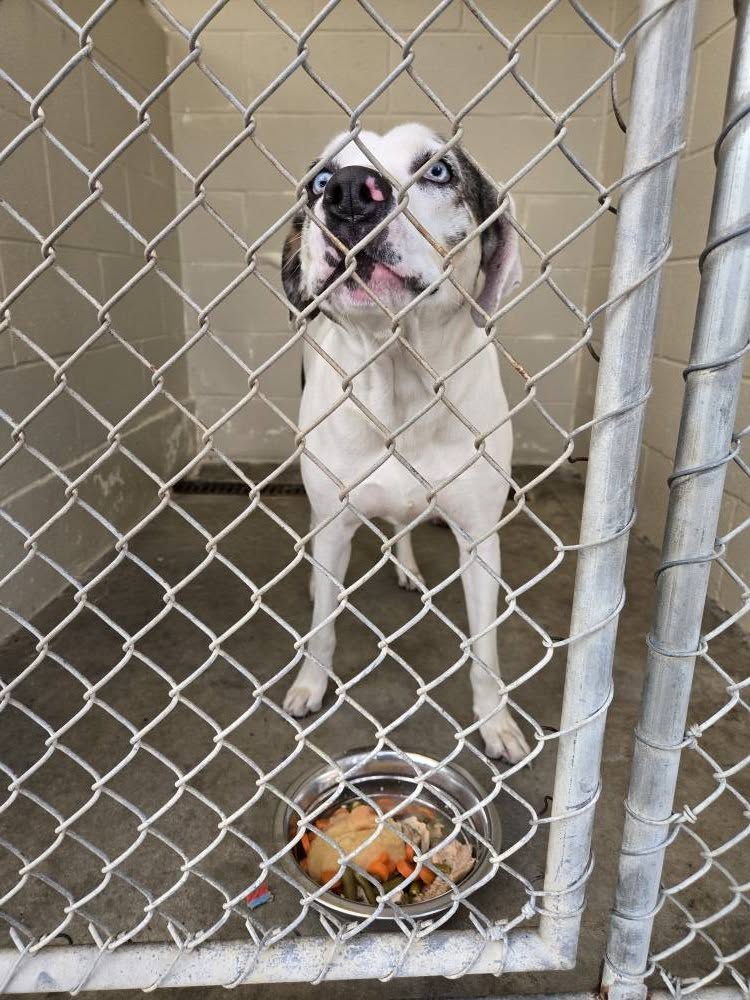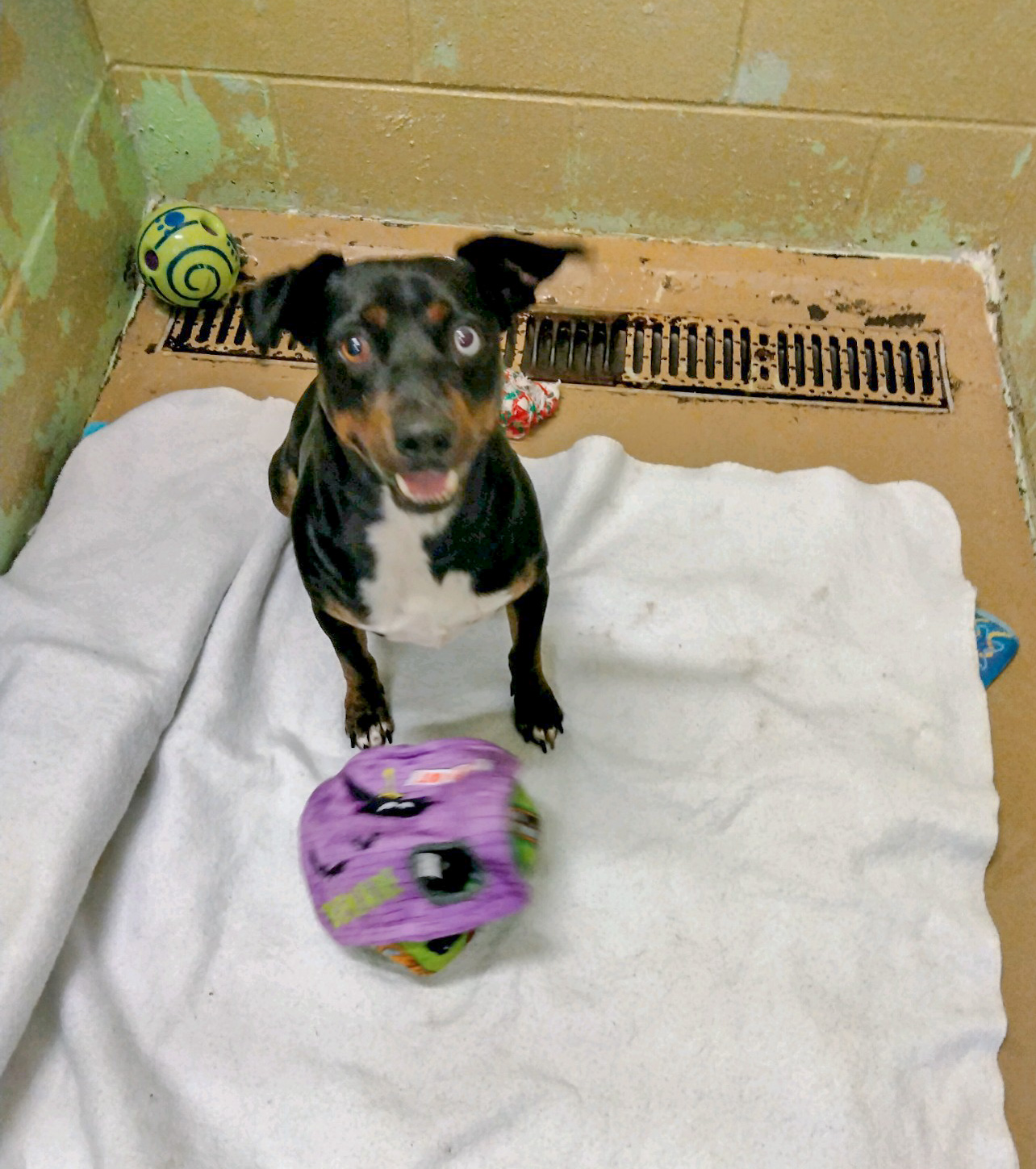County officials to discuss concerns with humane society
A few weeks after County Administrator Michael Hammond raised concerns at a commissioners’ workshop about overflow at the St. Joseph Bay Humane Society, leaders of the non-profit organization planned to sit down this week with county officials about issues facing the shelter.
Diana Burkett, who chairs the board of directors of the society, and Shelter Manager Heather Jones were slated to meet Wednesday with Hammond, Assistant Administrator Clay Smallwood and Commissioner Jack Husband.
In his remarks last month at the meeting in Honeyville, Hammond told commissioners that residents who wish to surrender their animals to the shelter have been told there is no room for them. “For the past several years they’ll tell them they’re full,” he said.
Hammond noted to commissioners the county contributes more than $60,000 annually to funding the society under a contract to house dogs brought in by animal control.
State and county law require that an effort be made to locate the owner, and that the animal be kept for a week. After that, in the event that the animal cannot be placed, the society assumes ownership and then acts based on its designation as a no-kill shelter.
“They have dogs that have been there for three years,” Hammond said. “I love dogs and I hate to see dogs put down. But it can be inhumane to keep them (that long) and it gets us in an uproar.”

Hammond did not voice a recommendation on what ought to be done to lessen this congestion, only to note that it is a problem that needs to be addressed.
But Burkett clearly has thoughts on what more the county could do, and that is that the county should take stronger measures to lessen the supply of stray and unwanted animals, mainly dogs.
“Every commissioner has a place in their district where it’s a problem,” she said. “You got to go to the people who are letting their dogs continue to breed. You’ve got to red flag these people.”
Burkett said she would like to see a stepped-up effort to reach out, whether it be through mailouts, town hall meetings or even sterner warnings by animal control officers that could lead to court action.
“We can’t make them spay or neuter, but we would highly suggest they do,” she said.
Burkett said that even with limited space, a steady flow of adoptions, and willingness by animal lovers to provide foster care for animals, the problem will continue unless something is done on the supply end of the custody chain.
“We’re constantly having to make room for animal control to bring in dogs from areas that have been a problem for years. It has been that way since the shelter was built and for years,” she said. “Those areas will continue to be the problem. You got to go to problem areas where problem dogs are coming from.”
She said that shelter people have been willing to reach out and work with residents to ensure they properly contain their animals, but there is only so much they can do. “We’ve bought kennels and we have fixed fences,” Burkett said.
She said she would support tougher legal measures to be enforced, or even enacted. “You have to punish people for letting their dogs run loose or for not properly caring for them, all things in an ordinance,” Burkett said. “There can be fines levied, and charges to be pressed.”
She said that the shelter makes a point of ensuring there is room at the shelter, which they own and operate, for animals picked up as strays by animal control.
But despite the fact there are 22 runs inside the adoption hall, and 19 available spaces in an outside holding area that has heating and temporary sides to keep the wind out, space can be tight, particularly since some areas must be designated for quarantine, or recovery, or for cats.
She said that when people call in and want to surrender their animals to the shelter, for whatever reason, and there is no room, shelter personnel will offer to advertise for adoption, or to find space for rescue animals in other locations.
“If we don’t have room we put the responsibility back on the owners,” Burkett said. “We post that this dog is not at the shelter. Every humane society does that when they’re full.
“We do have long term dogs, and have people who foster our dogs and help us hold our dogs,” she said. “We don’t have that many long-term residents. We’re moving dogs out of there just about every week.”
While Hammond alluded to the issue of euthanasia as a subject to be addressed, he did advocate for it as a means of reducing the population.
Burkett said a substantial amount of funding is tied to the shelter being a no-kill facility. “If we’re not no-kill, we would lose a lot of money,” she said.
“The whole point is we are moving animals, we are working with other shelters, but it’s a never-ending battle,” Burkett said. “One week we had 23 animals brought in. We were able to go to puppy rescue, and (give them) 11 puppies. These were all animal neglect cases.”
Burkett stressed the shelter has a program with Spay Bay in Panama City, where on the third Thursday of every month, the program picks up animals, and holds them overnight and brings them back that next day.
She said the service is not free, but charges a lower rate than private sector veterinary clinics, with the costs depending on the size and age of the animal. “It’s less if you work through us,” Burkett said.
“All the commissioners need to have a better understanding of what we do out there,” she said. “We need to bring to their attention the lengths we’re going to do to keep our doors open and serve this community.”
Shelter Manager Heather Jones, who doubles as volunteer coordinator and kennel tech manager, comes to her job after a decade of caregiving, in both the private and public sectors, for people facing dementia and end-of-life care issues.
She said the shelter can be a high-stress environment, because the behavior of animals varies widely, and is by no means always warm and cuddly.
“We’re always trying to gauge their fear of a new environment, and their ‘triggers,’ that might make them cower or be very active,” she said. “I wish all canines were just happy-go-lucky.
“Our volunteers are amazing,” Jones added. “A lot are working with dogs that are overly stressed, that have no manners, to get them adoptable. They don’t know to sit; they nibble on your fingers.”
She said because Gulf County is increasingly becoming a big retirement community, residents are looking for a smaller dog, a lap dog, or they want a dog that’s potty trained and there’s no jumping. And they don’t want so-called “bully breeds,” such as bulldogs.
“What we get in is a lot of abandoned dogs. This dog has probably been out there fighting for his life,” Jones said. “Adjustment is hard for people and for animals.”
She said the shelter has had to resort to popup cages for additional housing. “We’ve had to house dogs in the lobby and hallways,” Jones said.
One dog that came in not long ago was Freedom, a local legend that had been running the streets for a long time and was the known sire of nine litters. He had a non-weightbearing inflamed leg that had to be attended to.
“An unneutured male, how many litters will he produce if you allow them to roam?” she said. “Now he walks on a leash, loves his treats and is potty trained. He came in November and two ladies came in to donate for his medical care.”
The shelter sees more than its share of former, and since abandoned, hunting dogs. “Mr. Todd was tied to a tree and used as a bait dog for hog hunting,” Jones said. “Sparkles was tied up in a burlap bag on a hunting lease.”
She said the shelter will frequently see a wave of Christmas puppies. “They were cute and cuddly around the holidays, but around March when it’s time to start doing the work, they’re surrendered,” Jones said.
She said the community has been generous in helping, whether it’s by donating to the pet pantry where people can get food and other necessities, or by providing towels and blankets.
The absence of the inmate crews that used to assist with caring for dogs are a thing of the past, increasing the need for volunteers or for additional paid staff.
“We have a really great animal-loving community,” said Jones. “In the end, it’s not really an animal problem. It’s a people problem.”


Meet the Editor
David Adlerstein, The Apalachicola Times’ digital editor, started with the news outlet in January 2002 as a reporter.
Prior to then, David Adlerstein began as a newspaperman with a small Boston weekly, after graduating magna cum laude from Brandeis University in Waltham, Massachusetts. He later edited the weekly Bellville Times, and as business reporter for the daily Marion Star, both not far from his hometown of Columbus, Ohio.
In 1995, he moved to South Florida, and worked as a business reporter and editor of Medical Business newspaper. In Jan. 2002, he began with the Apalachicola Times, first as reporter and later as editor, and in Oct. 2020, also began editing the Port St. Joe Star.